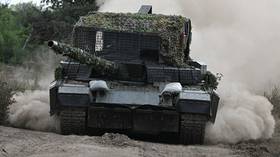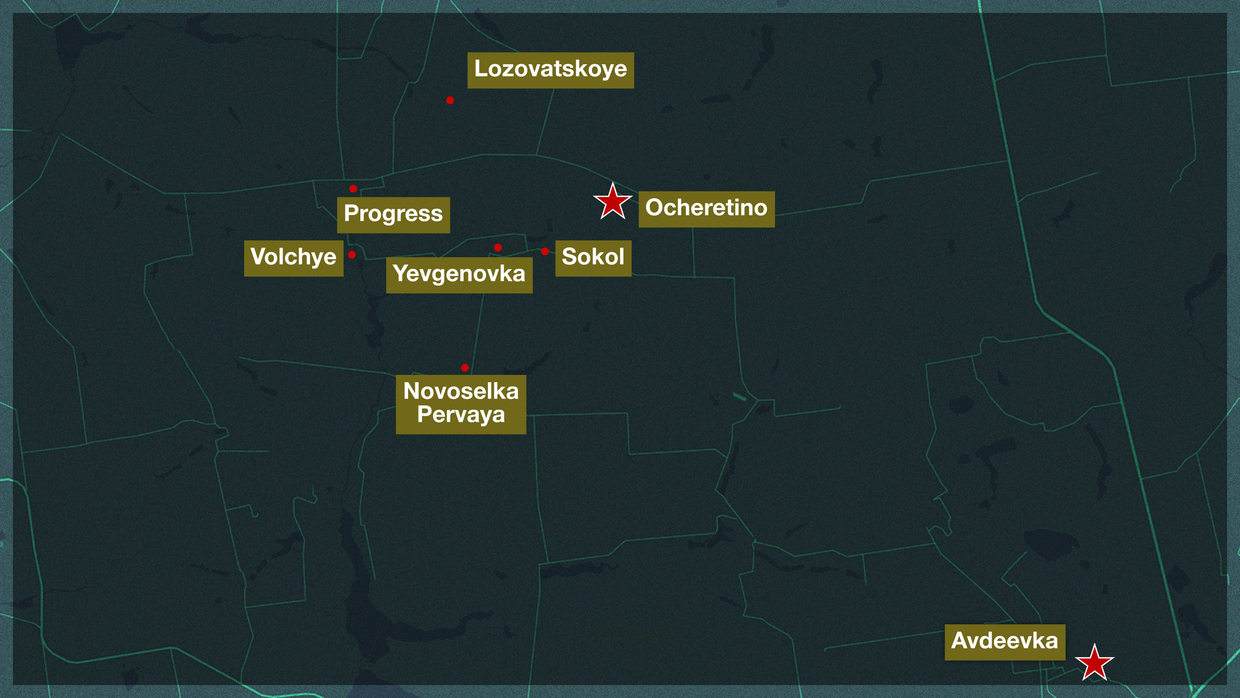Donbass push, winged bombs and hunt for Western-supplied armor: The week in the Ukraine conflict

The past week in the Russia-Ukraine conflict has been marked with Moscow making new advances in Donbass and liberating multiple settlements in Russia’s Donetsk People’s Republic (DPR).
The most active hostilities continued to the northwest of the strategic DPR town of Avdeevka, liberated by the Russian military in February. Russian forces continued to expand their zone of control near the town of Ocheretino, once a major logistics hub for Ukrainian troops, seized by Moscow in April, with Kiev’s forces apparently still unable to stabilize the front line in the area.
Last Sunday, the Russian Defense Ministry announced the liberation of the villages of Progress and Yevgenovka located to the southwest of Ocheretino. The latter settlement effectively forms a single agglomeration with the village of Voskhod, liberated by Russia last month.

The next day, the Russian military said it seized the village of Volchye, located to the south of Progress. The westward push in the area continues, with the latest media reports indicating further advance of the military in the area.
On Sunday, the Defense Ministry announced the liberation of Novosyelka Pervaya, a large village located 3.5km to the south of the Yevgenovka-Voskhod-Sokol area. The settlement has seen active combat over the past few weeks, with the Russian offensive supported by heavy artillery and aerial bombardment. The village is split in two roughly equal parts by the Volchya River, with the minor waterway serving as a natural obstacle for the troops.

The Russian military has also made progress near the DPR city of Gorlovka, with intense combat continuing amid the advance on the town of Toretsk (also known as Dzerzhinsk), located to the northwest. The Russian military has reportedly made minor gains in the village of New York (also known as Novgorodskoye), as well as capturing the village of Leninskoye (Pivdennoye), a small settlement between Gorlovka and Toretsk.
Ukrainian troops reportedly remain in their heavily fortified entrenchments between New York and Gorlovka, as well as further to the south. The remaining forces are now risking a potential encirclement should Moscow’s forces be able to establish full control over the narrow, 5km in width, exit out of the pocket.
Hunt for Western-supplied armor
Over the past week, the Russian Defense Ministry reported the destruction of multiple Western-supplied tanks, including rare pieces in Kiev’s stock. Last Monday, the ministry shared footage of an artillery strike on a US-supplied M1 Abrams tank.
The vehicle was found to the northwest of the city of Avdeevka where it got stuck in an overgrown trench, footage shared by the military shows. The tank was destroyed by a single Krasnopol guided shell, fired by a 152-mm Msta-S self-propelled howitzer.
On Tuesday, a drone video showing the destruction of a Leopard 2A4 tank and reportedly taken near the Ukrainian-controlled Donbass town of Kurakhovo emerged online. The vehicle was spotted while firing at Russian positions, receiving return fire and unsuccessfully trying to escape it in a wooded area.
The tank sustained multiple hits, eventually catching fire in its ammo stock in the rear of the turret, which eventually spread into the crew compartment, the footage shows.
The Russian military has also reported the destruction of two older German-made Leopard 1A5 tanks, sharing footage of kamikaze drone and artillery strikes on the vehicles near the town of Kupyansk in Kharkov Region.
Footage shared by the military on Monday shows a Leopard 1A5 being hit by a Lancet loitering munition in its rear while speeding along a dirt road. The strike caused internal fire, with open flames seen erupting from its hatches.
The second Ukrainian tank was targeted by Russian artillery as it tried to hide in the shrubbery. The Russian military said the vehicle ultimately sustained a direct Krasnopol hit and was destroyed.
Vehicles of this type are technically the most numerous Western-supplied tanks in Kiev’s inventory, with over 170 vehicles pledged by various parties, yet the old machines have only been spotted on the front line on a handful of occasions.
Rear strikes
The Russian troops have continued the aerial campaign against Ukraine’s military rear and logistics, striking numerous targets near the front line. Over the past week, the military reported the destruction of multiple buildings used to accommodate troops and store various hardware, including suicide drones.
Last Monday, the Russian Defense Ministry showcased a strike on a temporary accommodation point in the DPR village of Velikaya Novoselka. The strike was conducted with a rare UPAB-1500B, a ‘true’ high-precision glider bomb. Munitions of this type have rarely been used in the conflict, as Moscow’s forces have been sticking to conventional freefall bombs fitted with Universal Correction and Guidance Module (UMPK) winged upgrade kits.
Another UPAB-1500B was reportedly used in the Ukrainian-controlled town of Gulyaypole in Russia’s Zaporozhye Region. The bomb hit a temporary accommodation point, with a surveillance UAV observing the strike and the work of the Ukrainian military evacuation teams, footage circulating online shows. The teams were tracked to another accommodation point that apparently received a FAB-1500 bomb with the UMPK kit.
The largest Russian freefall bomb to receive the UMPK kit upgrade, FAB-3000, was reportedly used to strike another military accommodation in the town of Liptsy in Ukraine’s Kharkov Region. Footage circulating online shows the massive bomb scoring a direct hit on the building, flattening one of its sections and badly damaging the rest of the structure.
Another drone video purports to show a strike on a building used by the Ukrainian military on the outskirts of the village of Scherbinovka, 12km to the northwest of Gorlovka.
The building was apparently hit with an air-launched missile, likely a Kh-38, sustaining severe damage. The building reportedly housed an UAV operator unit, with at least 13 servicemen killed in the strike and an unknown number of drones stockpiled at the site destroyed.
Counter-artillery effort
The Russian military has continued the hunt for Ukrainian high-value assets, destroying multiple Ukrainian self-propelled and towed artillery pieces with counter-battery fire and high-precision strikes.
A video circulating online shows a Lancet kamikaze drone striking a rare German-supplied PzH 2000 self-propelled howitzer. The artillery piece was discovered in an unspecified location on the front line as its crew attempted to conceal the vehicle in shrubbery.
However, the howitzer still had a significant heat signature and remained easily recognizable, the infrared video shows. The vehicle sustained a Lancet hit, yet it remained unclear whether the howitzer was destroyed or merely damaged in the strike.
The Russian Defense Ministry has shared footage of a strike on a US-made М270А1 MLRS system, spotted near the village of Novotroitskoye in Russia’s Kherson Region. The tracked heavier cousin of HIMARS was identified by a surveillance drone while traveling along a road with an escorting soft support vehicle.
The launcher was tracked to a hiding spot in a wooded area. The location was hit by an Iskander-M ballistic missile system. The М270А1 MLRS, the escort vehicle, was destroyed and up to 15 Ukrainian servicemen were killed in the strike, the Russian military has said.












